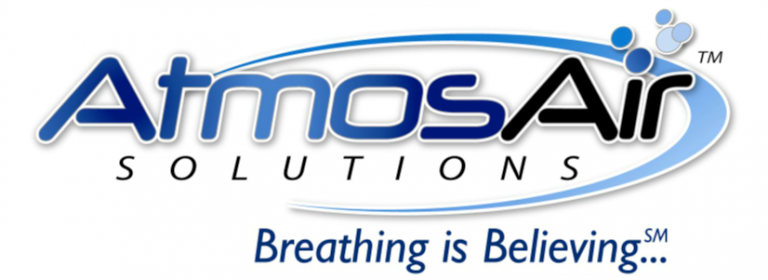AtmosAir Solutions

AtmosAir Solutions is committed to restoring indoor environmental air quality to the pristine levels of high-altitude mountain air through every possible means. Unlike traditional filtration solutions, our unique and effective air purification process eliminates mold, controls bacteria and airborne virus transmission, and reduces airborne particles and pathogens. Our technology employs an entirely natural process without harmful byproducts such as ozone or UV radiation, which are commonly generated by other products.
Technical/Product Application Fields:
Leading bipolar ionization technology, widely applicable for indoor air quality control.
Technical/Product Introduction and Advantages:
AtmosAir Bipolar Ionization Technology
Purer air environments naturally exhibit higher ion concentrations. Population growth and pollution have reduced ion levels. Air ions are nature’s method of purifying air. Bipolar ionization systems aim to elevate air ion concentrations to pollution-free levels, thereby improving air quality.
Airborne oxygen molecules pass through a dielectric barrier (bipolar ionization tube). The tube generates air ions with positive and negative charges. These ions attract oppositely charged airborne pollutants. Through contact, pollution levels are reduced, creating cleaner air.
Key Features of AtmosAir Bipolar Ionization Technology:
Particle Reduction
Ions generated via bipolar processes attract oppositely charged particles and induce mutual attraction between particles. This triggers agglomeration, rapidly accelerating particle settlement to the ground and away from breathing zones. Ionized particles are effectively removed from respiratory spaces. Particles entering HVAC systems continue undergoing ionization; their agglomerated size enhances HVAC filter efficiency. Settled particles remain grounded, avoiding re-suspension.Volatile Organic Compound (VOC) Control
VOCs consist of complex hydrocarbon chains, emitted from building materials, furniture, human activities, combustion sources, and stored chemicals. Introducing outdoor air into buildings traditionally dilutes VOC and CO2 concentrations. VOCs often cause odors, irritation, and sick building syndrome. Bipolar ionization interacts with hydrocarbon chains, breaking them down into simple components like CO2 and H2O. VOCs are decomposed, not merely diluted or masked.Microbial Control (Bacteria, Viruses, Mold)
Harmful microbes require food and water to proliferate. Bipolar ions interact with charged elements on microbial surfaces, stripping hydrogen molecules. This prevents cellular division and reproduction, reducing bacterial colonies and mold spores. Achieves both preventive and therapeutic effects.Static Electricity Control
Bipolar ions balance positive and negative charges, neutralizing static electricity. Resolves static issues in winter and controls static in production facilities, data centers, and critical work environments.Energy Efficiency
Systems consume minimal energy (most devices <50 watts). No airflow restriction or significant static pressure drop in ventilation systems. Complies with cost-effective ASHRAE 62.1 IAQ standards, recognized by international and local regulations. Reduces outdoor air intake in new systems, lowering operational costs and tonnage loads. Minimizes infiltration of external particles, spores, and odors.
For cooperation inquiries, please contact CSP Secretariat: CSP@icet.org.cn